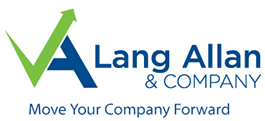
The Employee Retention Credit has been designed to encourage businesses to keep employees on their payroll. The refundable tax credit is 50 percent of up to $10,000 in wages paid by an eligible employer whose business has been financially impacted by the coronavirus and quarantine.
Who’s eligible? All employers regardless of size—including tax-exempt organizations—but not state and local governments and their instrumentalities or small businesses that take small business loans.
Qualifying employers fall into one of two categories:
- The employer’s business is fully or partially suspended by government order due to COVID-19 during the calendar quarter.
- The employer’s gross receipts are below 50% of the comparable quarter in 2019. Should your gross receipts rise above 80% of a comparable quarter in 2019, you no longer qualify after that quarter.
Wages paid after March 12, 2020, and before January 1, 2021, are eligible for the credit. Wages taken into account aren’t limited to cash payments — they include a portion of the cost of employer-provided health care. Qualifying wages are based on the average number of a business’s employees in 2019.
- Employers with fewer than 100 employees on average in 2019 base the credit on wages paid to all employees, regardless of whether they worked or not. If the employees worked full time and were paid for full-time work, the employer still receives the credit.
- For employers with more than 100 employees on average in 2019, the credit is allowed only for wages paid to employees who didn’t work during the calendar quarter.
How do you receive your credit if you think you’re an eligible employer?
You can be immediately reimbursed for the credit by reducing required deposits of payroll taxes that have been withheld from employees’ wages by the amount of the credit. Eligible employers will report their total qualified wages and the related health insurance costs for each quarter on quarterly employment tax returns or Form 941, beginning with the second quarter.
If your employment tax deposits aren’t sufficient to cover the credit, you may receive an advance payment from the IRS by submitting Form 7200, Advance Payment of Employer Credits Due to COVID-19. You can request an advance of the Employee Retention Credit by submitting Form 7200.
The Families First Coronavirus Relief Act (FFCRA) requires certain employers to pay sick or family leave wages to employees who are unable to work or telework due to certain circumstances related to COVID-19. Employers are entitled to a refundable tax credit for the required leave paid, up to specified limits. The same wages cannot be counted for both credits. Also, businesses may not receive the Employee Retention Credit if they also receive a Small Business Interruption Loan under the Paycheck Protection Program.
If you have any questions, please give us a call.
